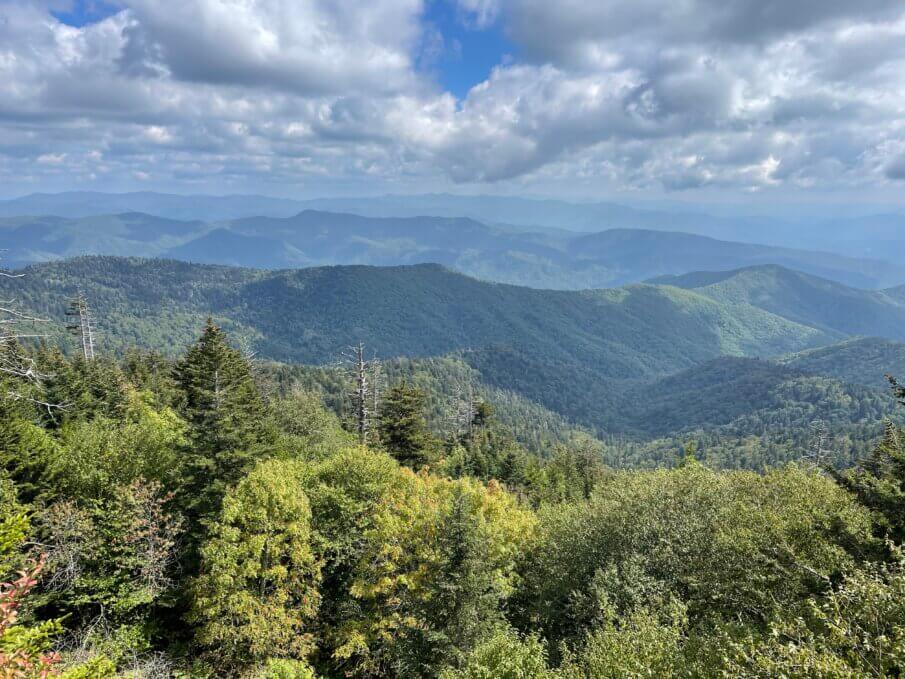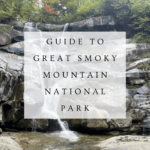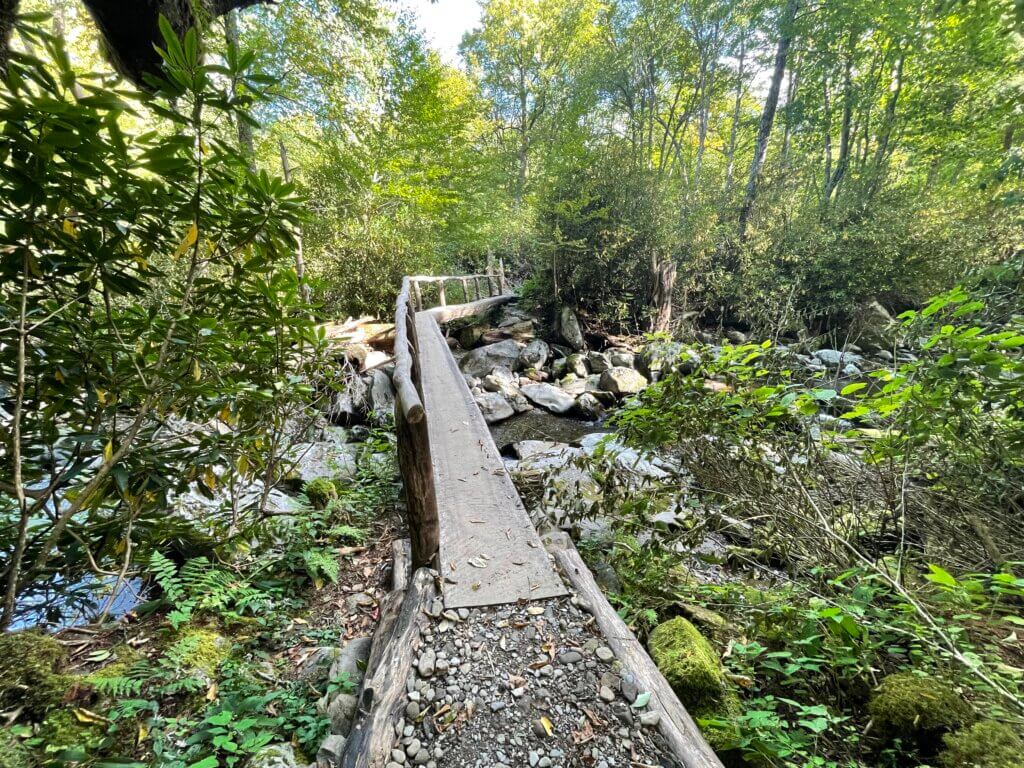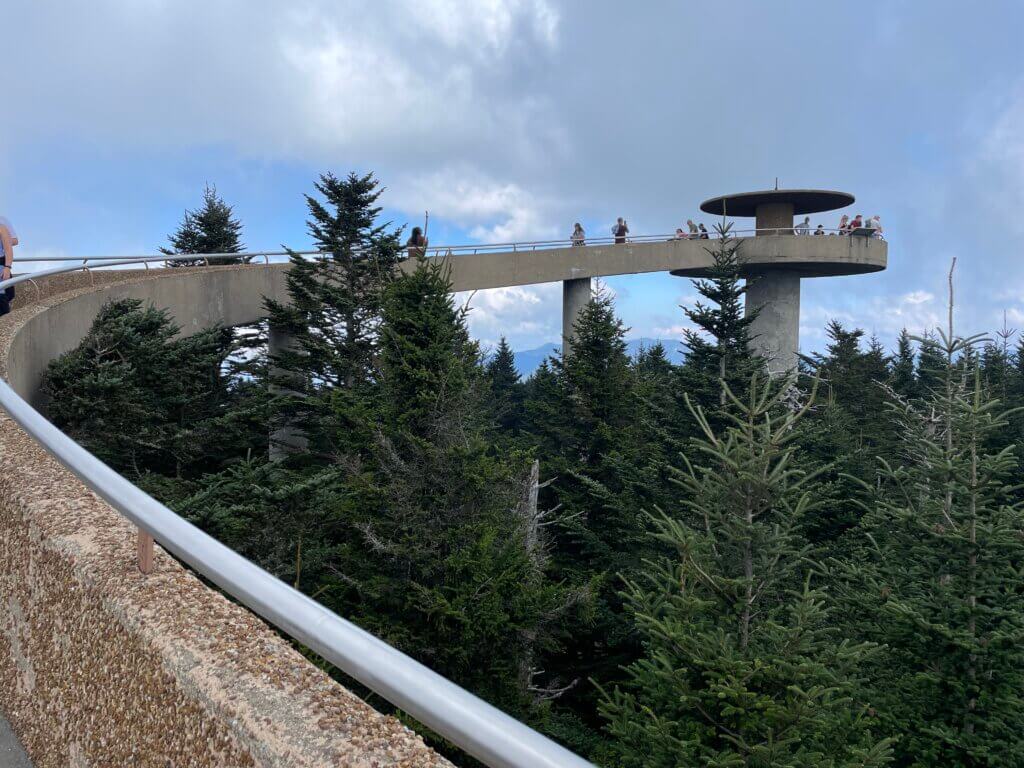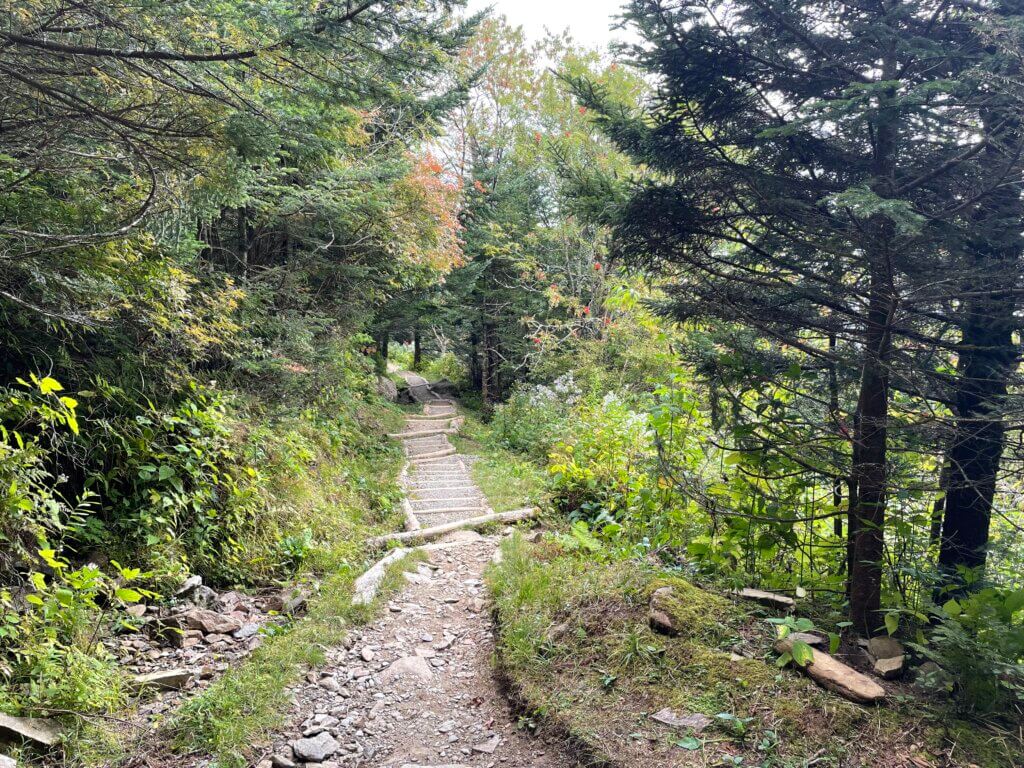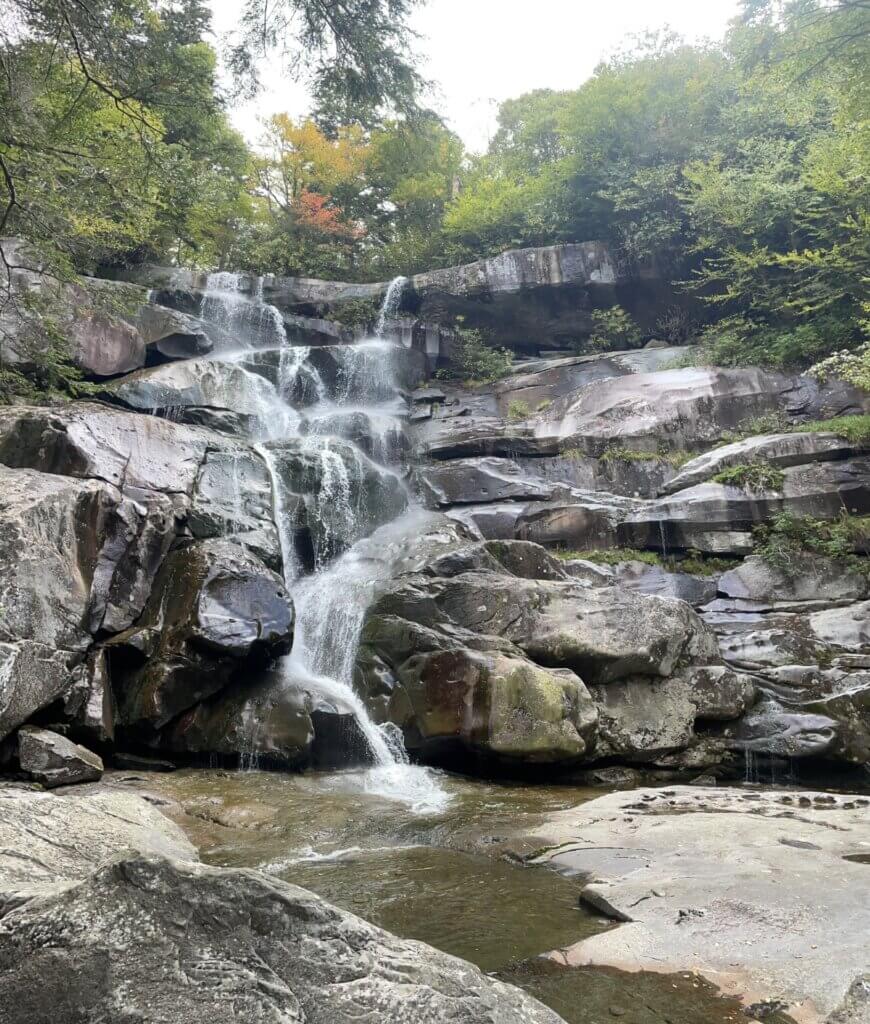*This post contains affiliate links, if you make a purchase I get a small commission
Great Smoky Mountains National Park straddles Tennessee and North Carolina and consists of just over 522,000 acres of pure wilderness with old-growth forests and the Blue Ridge Mountains. It’s rugged, it’s remote, and it’s beautiful. It is also the most visited national park in the US with over 13 million visitors each year and for good reason. This is a great place to visit for hikers and those looking for incredible views from the many observations points along the road.
This guide will help you plan your trip to Great Smoky Mountain National Park and give you a few day hikes to get you started.
Directions and Entrances
I found this park one of the more confusing parks because there wasn’t a lot of obvious entrances. There are a few, don’t get me wrong, but there are also these rugged side roads that take you deep into the park to only a couple hikes.
And they don’t connect with one another. So, if you are starting at say, Ramsey’s Cascades and then want to go check out Clingman’s dome you need to exit the park and drive around to another entrance. It’s an adventure and worth it, just consider that drive will take over an hour, so plan your day accordingly.
You can enter the park from two main sides, the Tennessee side and the North Carolina side. Most people will enter through the Sugarlands entrance on the Tennessee side because of its connection to places like Pigeon Forge and Gatlinburg.
For full information on all the entrances check out this Outside magazine article specifically talking about park entrances.
I stayed in the very small town of Cosby and for those who aren’t into the cheesy, over the top tourist attractions, avoid Pigeon Forge. But if you want dining options and aren’t staying in the park, I would recommend staying near Gatlinburg, as Cosby had 2-3 total places to eat and they were not very good.
Address: 107 Park Headquarters Road, Gatlinburg, TN 37738
Driving directions can be found on the National Park Service website. There are no buses that will take you to the park, so you will need a car or a bicycle depending on where you are starting from.
Fees and parking
This is the one park that does not take the American the Beautiful Pass, which I highly recommend if you are going to be visiting multiple national parks in a year.
It does, however, require you to purchase a parking permit. This costs $5 a day or $15 for the week. You need to purchase it before you park anywhere, as it is a requirement to display your parking tags in your window.
You can purchase them at any of the welcome centers, visitor centers and a few grocery stores. There are also a couple places in the park where you can purchase passes using a fee machine. For a full list of locations visit the National Park Service fees and passes page.
Best time to visit
As with most national parks the best time to visit is during the summer months. Here you will have the best chance of getting more clear days with the best views. However, this is the most popular national park in the country, so I would recommend going during the shoulder season to avoid some of the crowds or picking some of the less popular trails to explore.
Camping
If you are looking to stay in the park there are several campground options (for those not doing a backcountry multiday hike). There are 10 “front country” developed campgrounds to choose from, depending on what are you plan to be hiking.
Remember, as I said above, not all areas of the park are connected with roads, so you may have to do some additional driving which may not be as convenient and mean you end up driving more and hiking less. And no one wants that!
For those planning to go backcountry camping, make sure to check the National Park Service website for everything you need to know before you go. This includes bear canisters, permits, regulations, safety and more.
Reservations and permits are required for all backcountry camping.
Wildlife
There is an abundance of wildlife in Great Smoky Mountain National Park. Especially black bears. There is an active program to rehab bears and release them in the park. The abundance of bears here cannot be understated.
Most of the time bears are more afraid of you than you are of them. Yeah, I know we have all heard the stories and they exist, but those bears had something more going on. They were either habituated because people did not practice leave no trace principles and the bear, they are a mother with small cubs or they had some illness that made them more aggressive.
My advice is to make noise (no do not bring your speakers and play music, no one appreciates this) but things like bells, clapping, or chatting while hiking can let a bear know you are in the area. A startled bear is more likely to be an aggressive bear.
And always bring bear spray.
Ok, so back to the amazing wildlife in this park. Other than bears, you might see snakes, a variety of birds, deer, and maybe a coyote or two. The forest is so dense and plentiful in this area that lots of other animals call this place home.
Best hikes
The main trail of the Appalachian trail is a 72 mile hike through the park. However, if you only have time for day hikes, these scenic trails are a great way to get started.
Clingmans Dome
If you get in late or only have a short time on your first day, checking out Clingman’s Dome is a short distance and easy hike and gives great views of the park from the observation tower. It is also one of the most popular trails in the park, so plan accordingly if you hope to get parking.
It’s a one mile round trip walk up a fully paved path. Yes, it is a continuous, but gentle uphill. There are plenty of places to stop and rest along the way, for those that may need a little extra time. The view point is up a ramp and gives a 365-degree view and is the highest point in the park at 6,643 feet.
Be aware that parking there can be near impossible, so going on a weekday or later in the day (or super early to catch the sunrise) are your best bets to get a spot. There’s also a gift shop there where you can buy a parking permit if needed and there are several bathroom facilities.
Andrews Bald Trail
Located in the same parking lot as Clingmans Dome, if you have the day, you can do both easily, making it another of the most popular hikes. This trail is a short hike at 3.6 miles roundtrip and is an easy trail with some elevation gain but nothing significant.
The day I hiked this trail I only saw a handful of people and had the viewpoint pretty much to myself. If you want to make this a longer trek, you can continue on the Forney Ridge trail an additional 5.6 miles to Springhouse Branch Trail.
Ramsey Cascades
In my opinion, this is one of the best trails in the park. This is the perfect day hike. Parts of it are challenging with a steep climb of over 2,000 feet of elevation gain but the final reveal is worth every drop of sweat.
To access this trail, you take a narrow old gravel road to a small parking area. The beginning of the trail is wide and well maintained and honestly not that special. But once you get a little deeper into the forest, nature takes over.
The trail is strenuous hike of 4 miles, one-way and moderate to difficult. But it provides you with the parks’ tallest waterfall. It’s the perfect place to just hang out after a challenging hike and have a lunch.
Concluding Thoughts
If you aren’t into hiking, there are lots of opportunities to stop at viewpoints, take the ½ mile walk up to Clingman’s Dome, have a picnic at one of the many picnic sites, go camping, go fishing, or visit the information centers and gift shops.
The park really gives you the chance to get away for a bit and back into nature, whatever that looks like for you.
